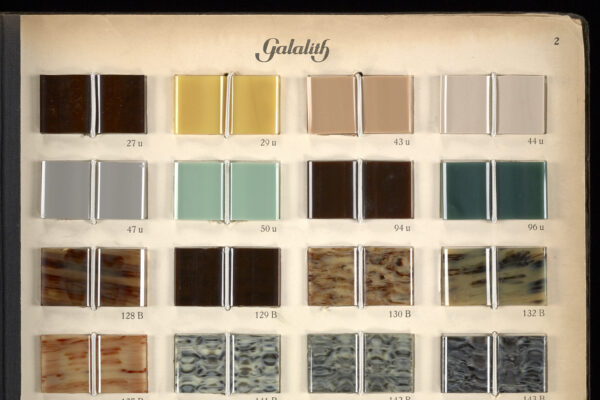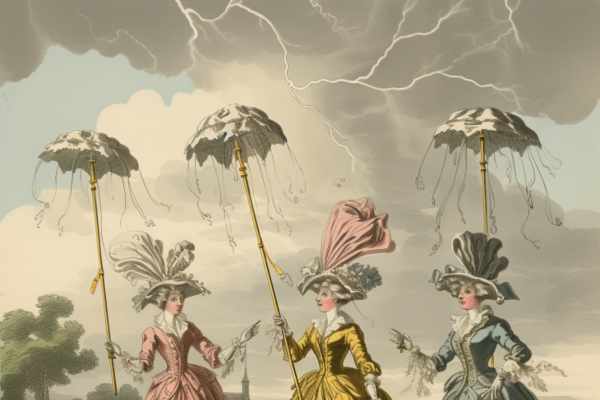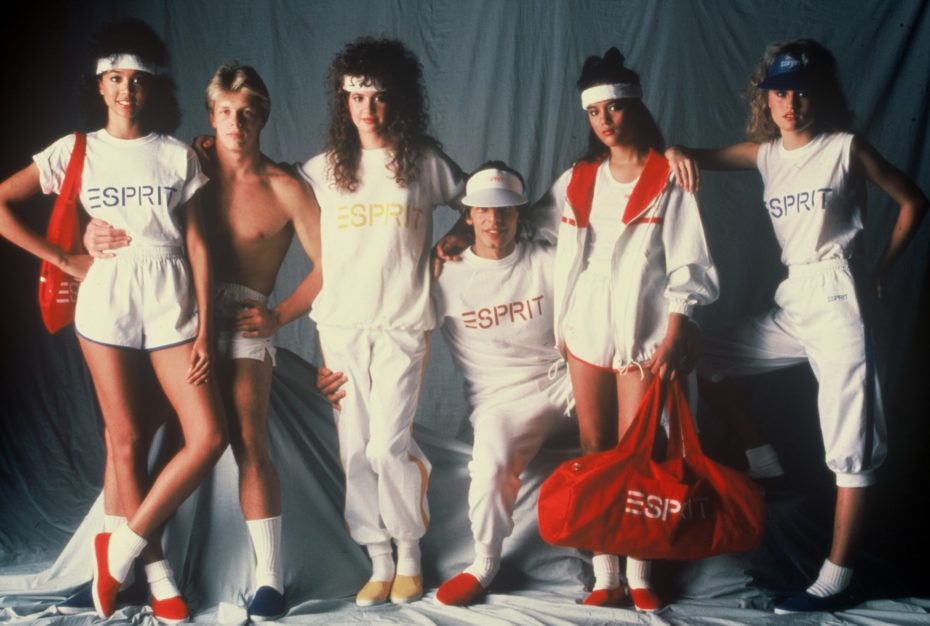
Ask any ’80s and ’90s kid at heart, and they’ll tell you: Esprit just did it right. The colour-blocking sportswear, the street-casted campaigns, the cutting-edge collaborations with designers that defined the ’80s. Even the brand’s commitment to environmentalism was so ahead of its time. “Esprit was an ethos,” says Michelle Koza, the woman behind the largest archive of the bygone ’80s fashion label currently in existence, “Esprit was a culture of inclusion. As a socially awkward quirky teen, I felt like I was part of a unique community. Wearing Esprit allowed me to express my individuality and celebrate being different.” We asked her what it’s been like to sift through her 2,400 (and growing) cozy relics, and were reminded once again of why our love for the label runs so deep.
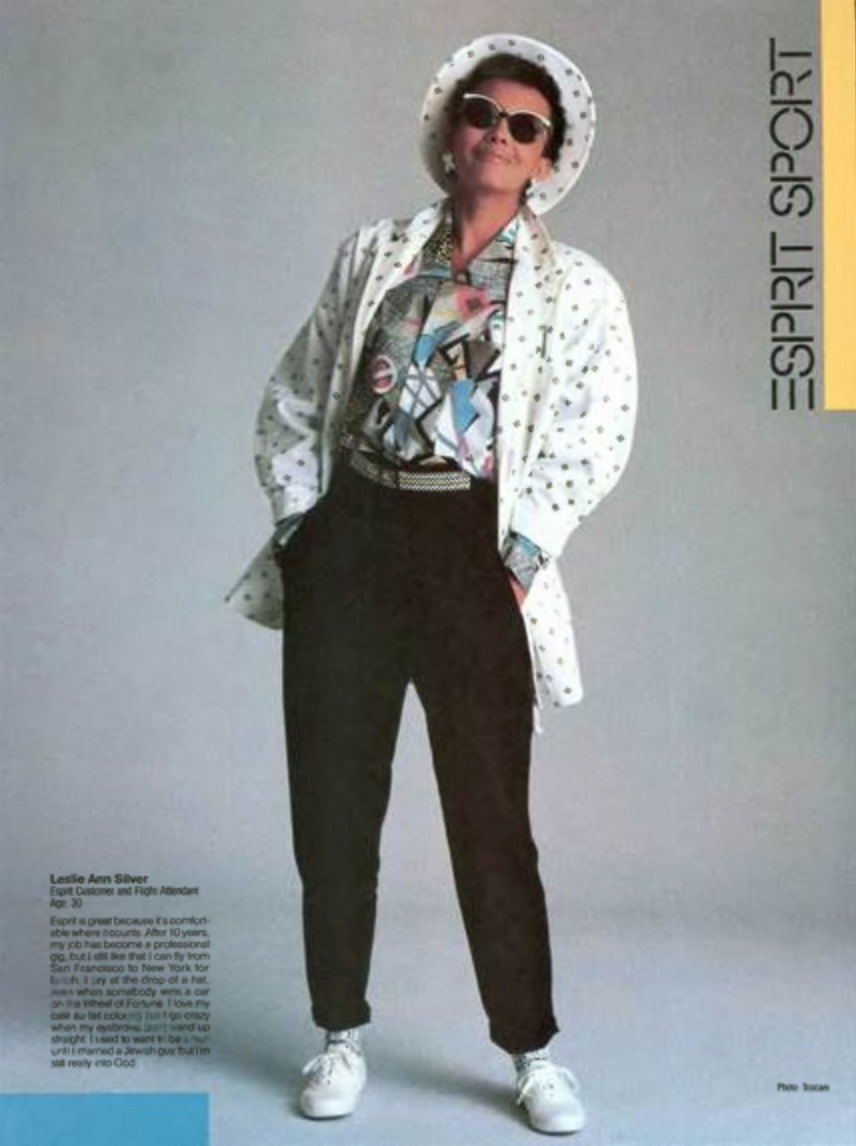
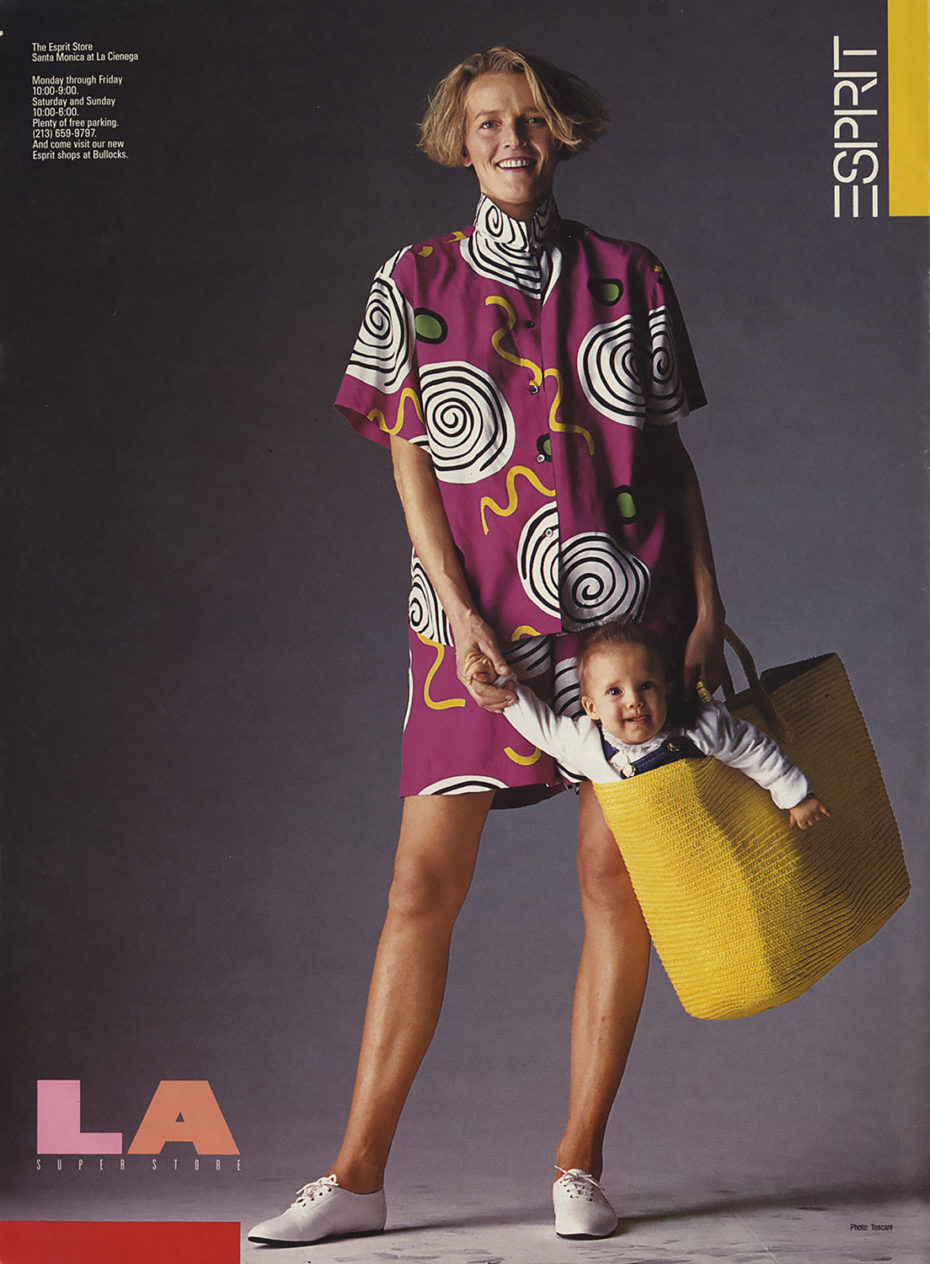
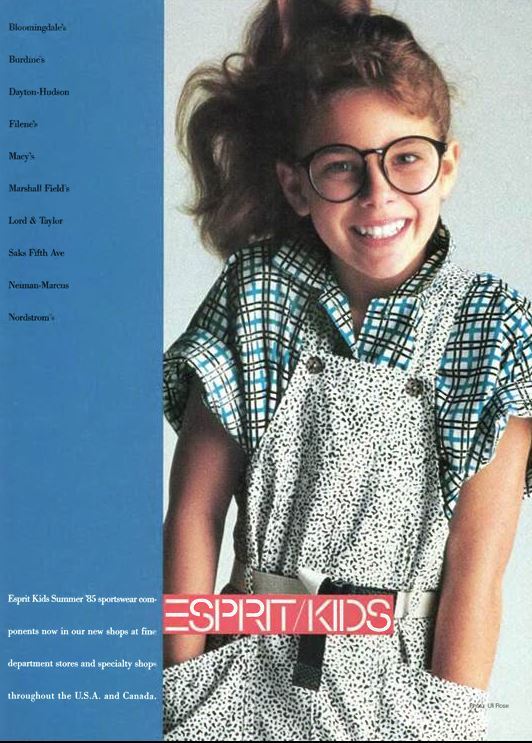
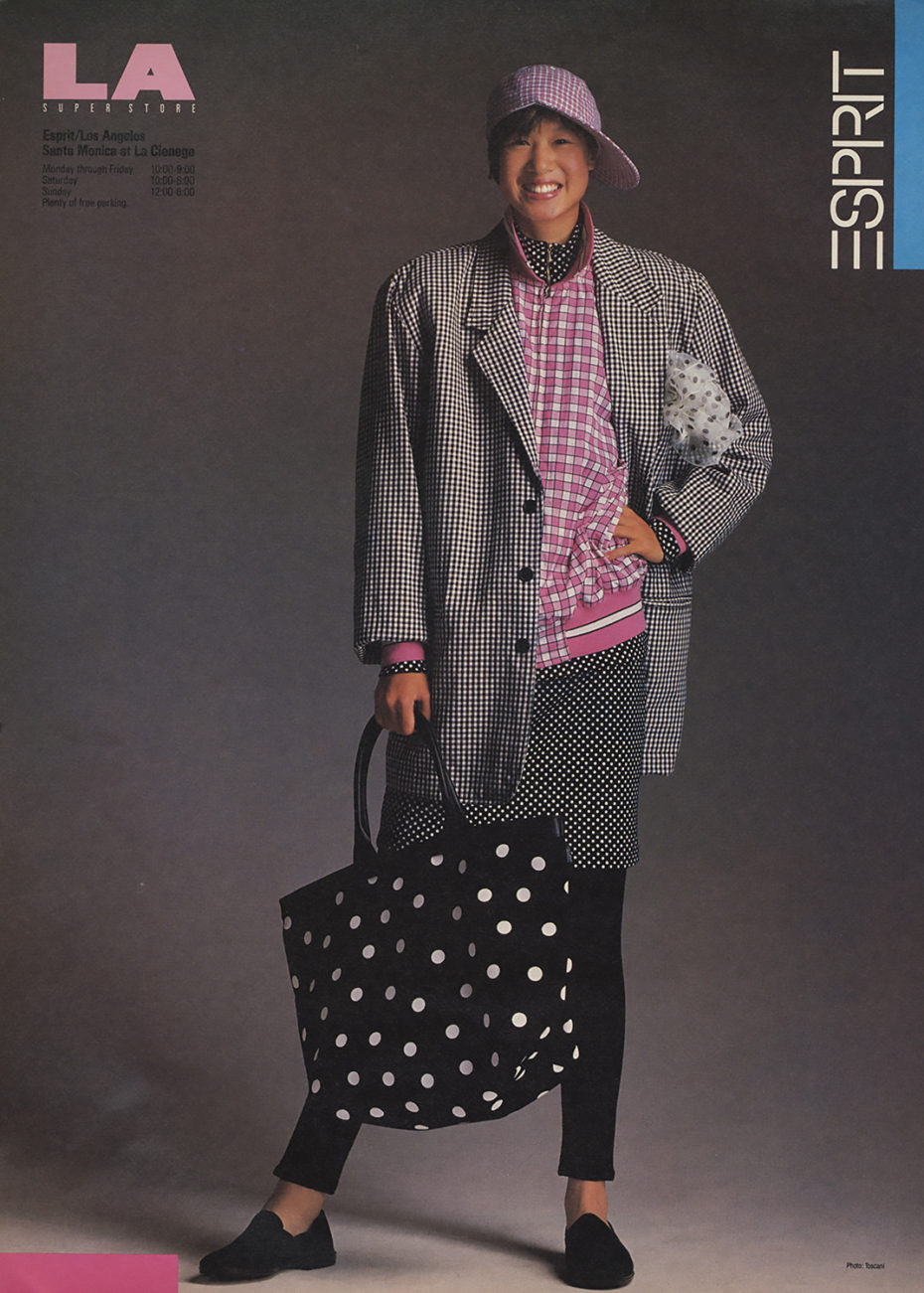
Michelle’s archive (for which she created an Instagram account) is both an act of love and a valuable lesson in archival work. “Throughout the years I collected iconic Esprit garments from the ’80s,” she says about that work, “I became serious about the archive in 2017 when I received a personal Esprit collection containing over 1,800 artefacts from a friend and former Esprit employee who passed away. She knew how much I loved the brand and trusted me with her collection.”
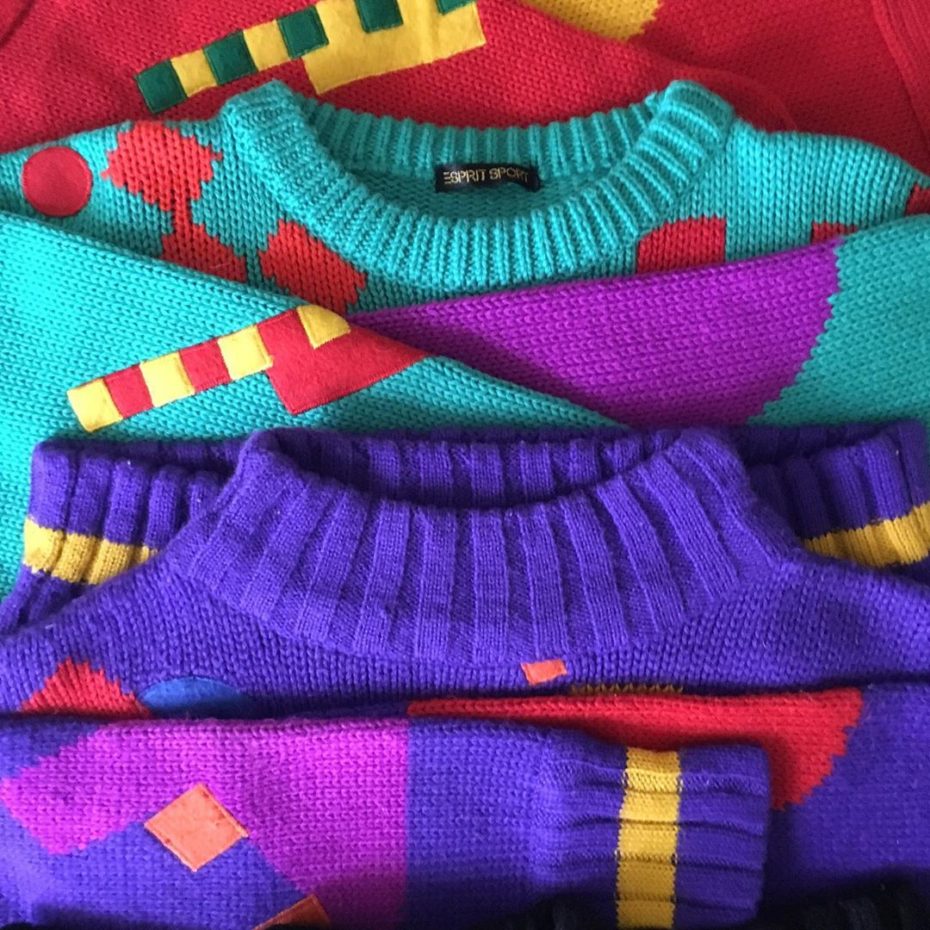

Originally called “Esprit de corp,” the label was founded by the same couple behind North Face, Susie and Doug Thompkins. “He [was] a creative guy from the East Coast, who was hitchhiking through California in 1963” says the official Esprit site, “She, a young Californian in a VW Beatle, driving to her holiday job.” Flower Power became their brand’s self-proclaimed driving force. “An example,” says the site, “long before ‘Eco Fashion’ becomes fashionable, they find a supplier of organic cotton and, then and there, produce the Esprit ‘eCollection.'”

Whether you were an Esprit kid or are just a lover of retro fits, you can’t deny how prophetic Esprit originally was in its minimal-maximalist aesthetic. Meaning: comfy silhouettes, neutrals, and bright colours abounded, giving us hip monochromatic looks long before “normcore” was a thing. Just look at the displays below from Michelle’s archive, and tell us this baby didn’t walk so the likes of Uniqlo and American Apparel could run…
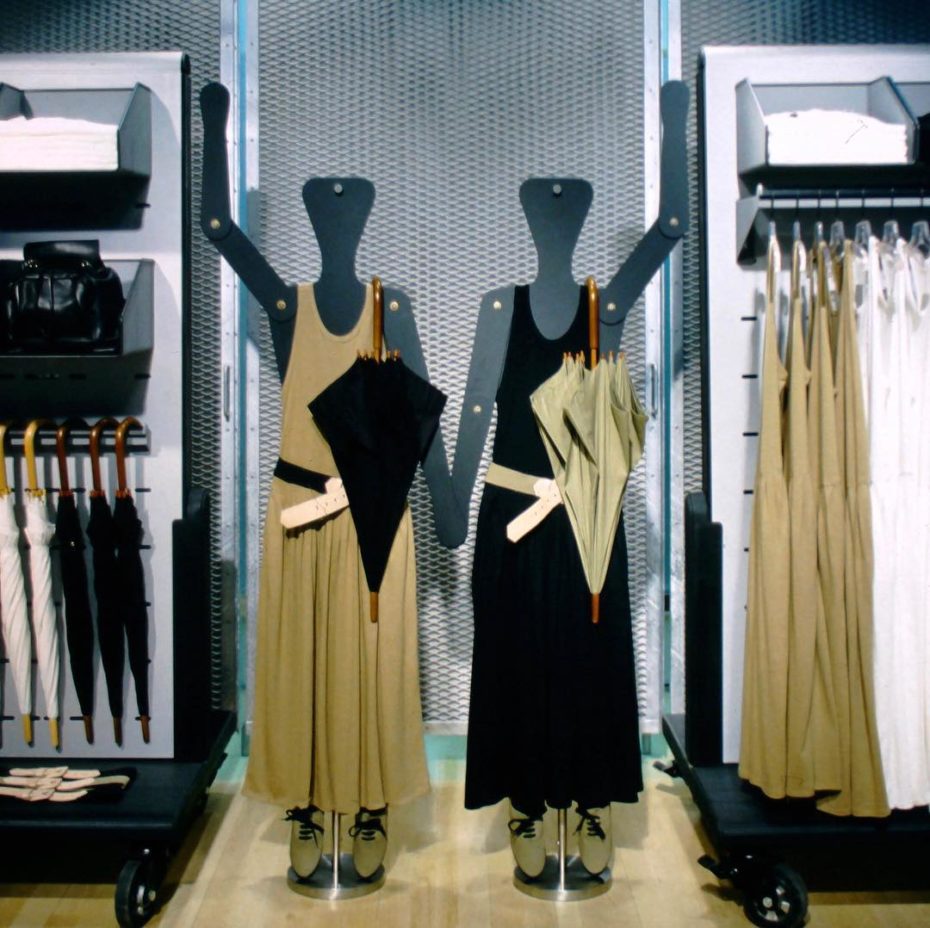
“Esprit was progressive and empowering,” Michelle says about the energy it exuded at its best, “from the AIDS awareness campaign in the mid-80s, to responsible consumption in the early ’90s. My favorite campaign was, What Would You Do? The campaign used real-life children and teens, talking about the issues that were most important to them. It is amazing the campaign quotes are still relevant today!” A few of the gems for What Would You Do?
“End racism and the killing of my people”
“I’d elect a woman President, it is obvious a man can’t balance the budget”
“Clean up the planet…but not my room”

Esprit “What Would You Do?“ Campaign postcard. ©Esprit Flashback Archive
“[They were] the first major fashion retailer to print catalogs on recycled paper with soy-based inks in 1989,” says Michelle. They were also the first major brand to address the AIDS epidemic, and didn’t shy away from addressing racism through their platform.
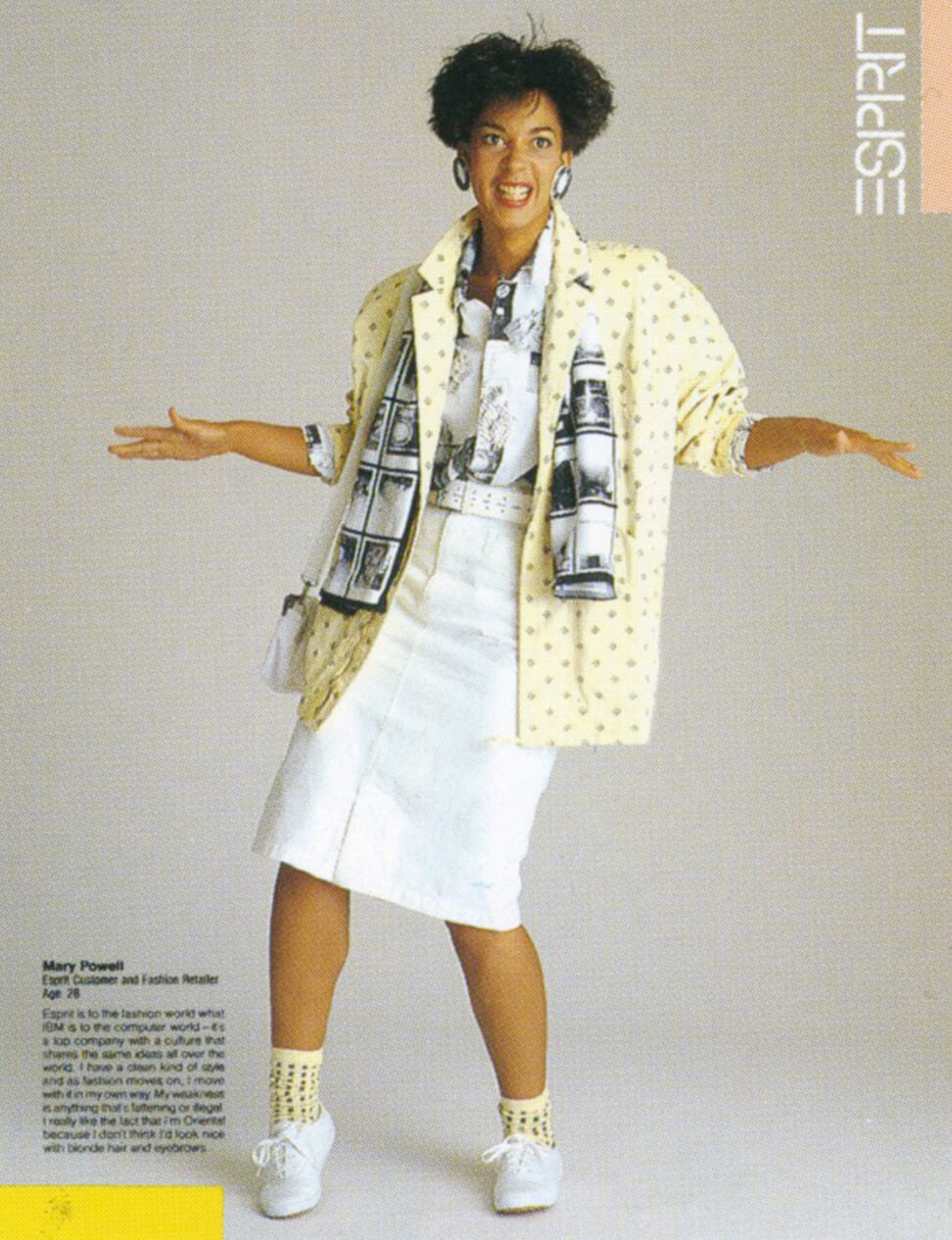
“Back in the ‘90s, we didn’t have social media to share our thoughts, opinions, etc.” says Michelle, “Esprit gave my generation a platform to be heard.” Their Real People Campaign was another meaningful project, and also one of the firsts to use non-models for marketing.
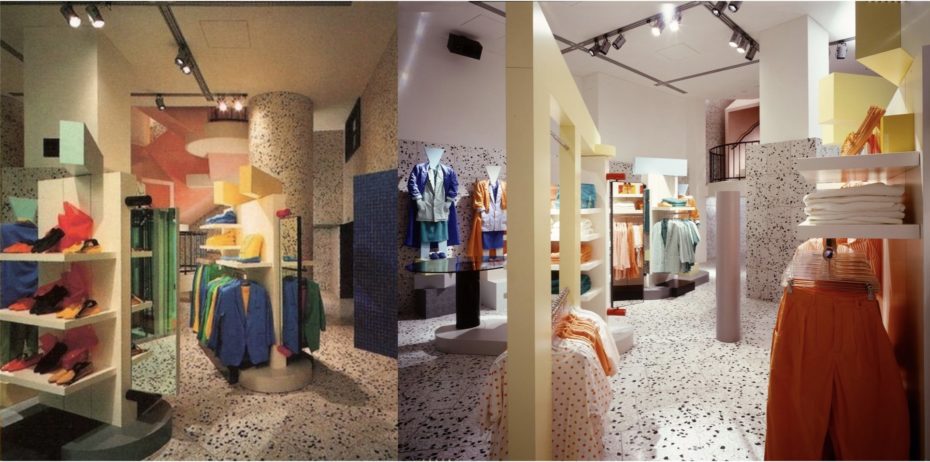
Theirs was a narrative of relatability, rather than exclusivity – which is part of what keeps Michelle, who is a design consultant in California, working tirelessly to preserve creations from the brand’s glory years. So many brands today could benefit to take note from their use gender neutral mannequins, reusable packaging, and environmental marketing materials.

“We felt we had a voice and an enormous audience,” said founder Susie Tompkins to Sun Sentinel in 1987, “We just realized that we had a vehicle for [helping] and did it. ” So…what happened? Well, the ’90s for one thing. That grunge look and anti-corporate sentiment didn’t exactly align with Esprit’s bold logos and Euro-chic styling.
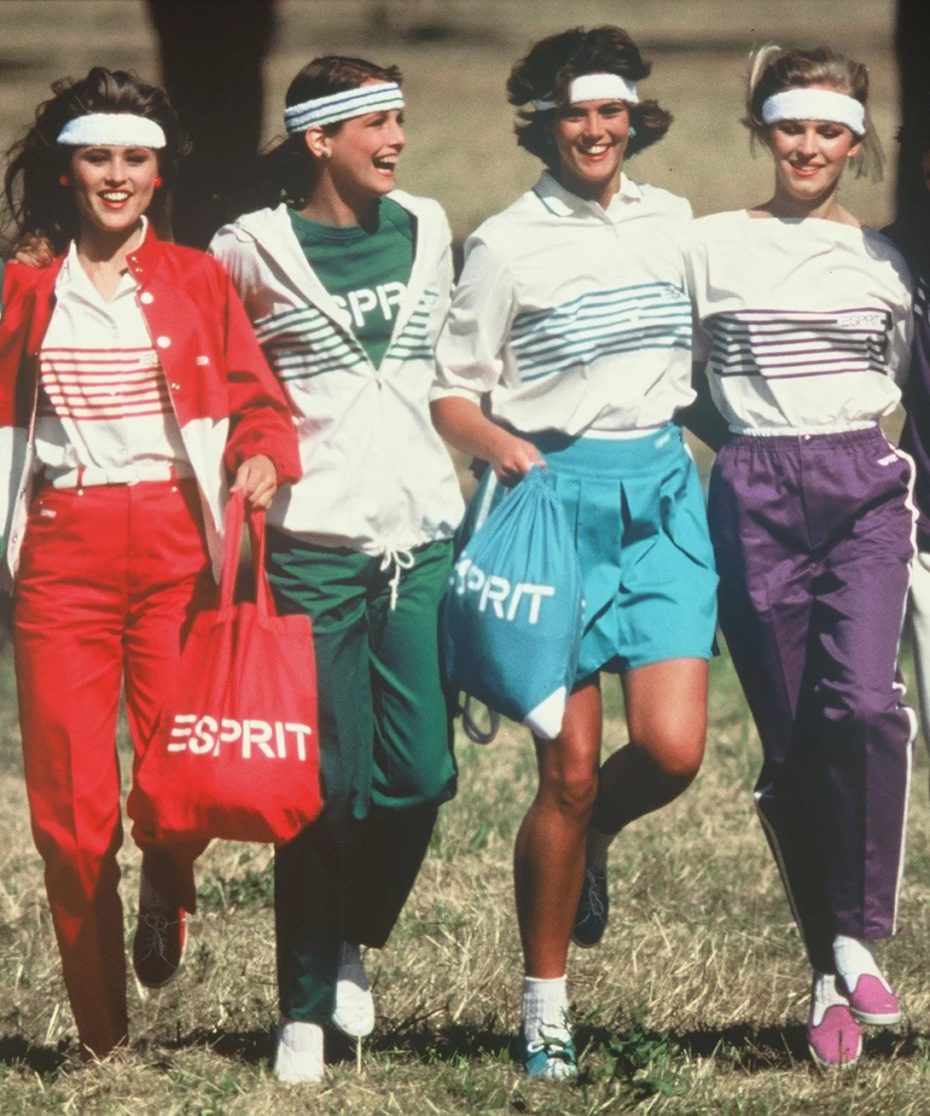
The brand’s prolonged decline happened somewhat quietly until in 2011, when all of its North American stores were suddenly closed following a 98 percent earnings slump. In 2016, it made a brief return to the American market in the form of a capsule collaboration with NYC’s cool-kid concept store Opening Ceremony:
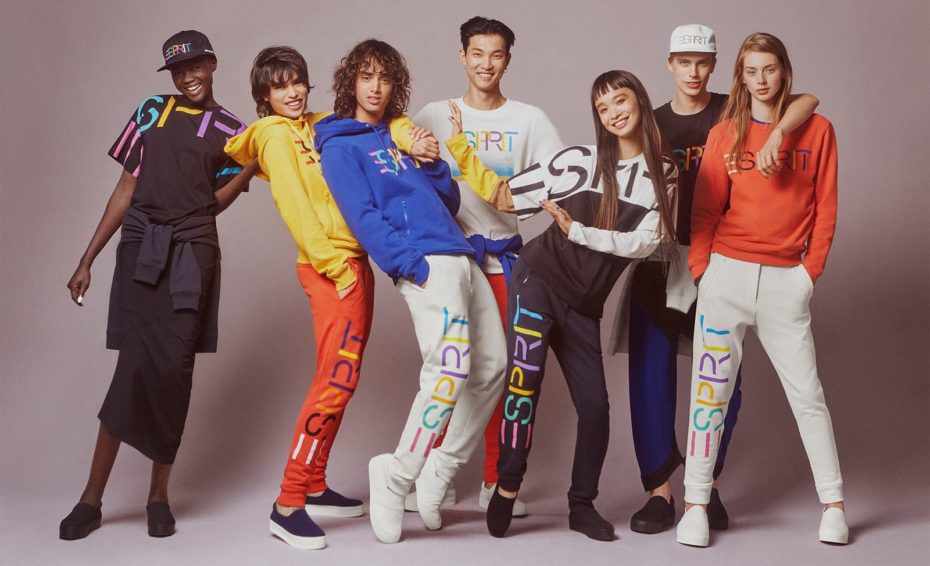
Esprit still exists, but in unexpected places. As fast fashion chains took over the market in the 2000s, Esprit lost its place on the high street, and their boutiques moved to smaller European towns and shopping malls in China, where the brand has become a very familiar name in the last two decades. “I don’t recognize the brand anymore,” says Michelle, “I don’t think the company understands its brand heritage.”

While the brand has seen some successful heritage collaborations, Esprit has never quite felt the same. In danger of falling into the trap of becoming just another fast-fashion retail chain, the company found itself back in the red in 2018, and promised major changes to its Hong Kong investors, acknowledging “we’ve lost touch with our audience” while proposing a focus on wholesale. In 2020, Esprit closed all of its retail stores in mainland China.
When asked if she knows the breadth of Esprit’s official archive, Michelle has a very diplomatic answer, “I was told their archive consists of 3 books and an amazing color library. I think brand archives are a recent phenomenon in the fashion industry. I heard of other brands scrambling to collect as many vintage pieces as they can to build their archive.” Over a year ago, the company reached out to Michelle to discuss working together, but at the time she felt their “intentions for the archive were not aligned.”
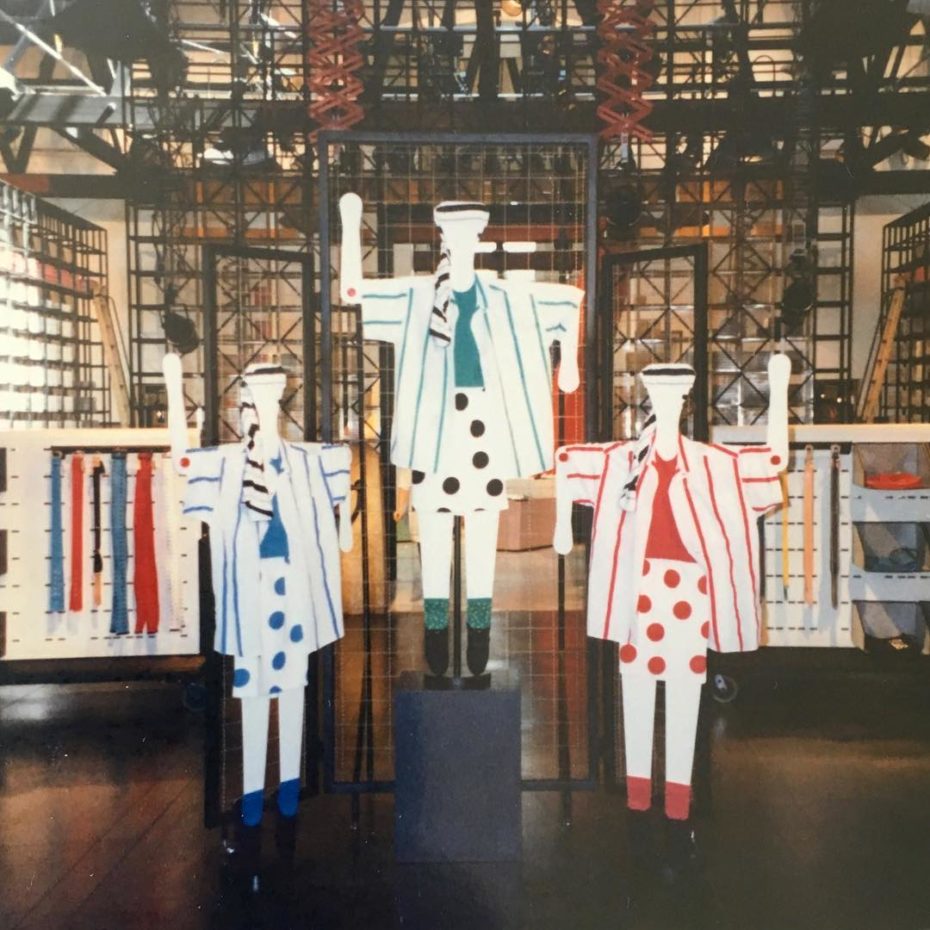
Thus, the task of preserving the true Esprit ethos falls on Michelle, a self-proclaimed ‘ex-mall rat’. Lovingly, and attentively preserving the collection in her quiet and compact Santa Monica home, she tells us “almost everything is stored in repurposed boxes. My sweaters are neatly folded, stuffed in pillowcases, and stacked in my Esprit shopping cart. My Esprit Sport collection and jackets consume 60% of my closet space. luckily I do not own a lot of ‘stuff. I’ve always lived in small spaces to keep my footprint small.”


Most tend to think of archival work as something academic or stuffy – a closed club, if you will. In reality, so many archival projects blossom naturally from personal relationships or passions. Often, they’re a proverbial passing of the baton, as in Michelle’s case. “I believe her intention was brand preservation,” she says of the friend who left the collection in her care. “She worked at the Esprit Superstore Los Angeles on the visual merchandising team and had a lot of insight. I wish we had collaborated on the Esprit Flashback account before her passing, I think it would’ve brought her a lot of joy.”

“My goal is to have a well-rounded archive that captures the Esprit heritage,” she says, “from marketing materials, corporate collateral, visual merchandising, garments, and accessories. I find items online, at thrift stores (friends keep an eye out for me), and I receive contributions from former Esprit employees who follow my account, it is pretty amazing!”
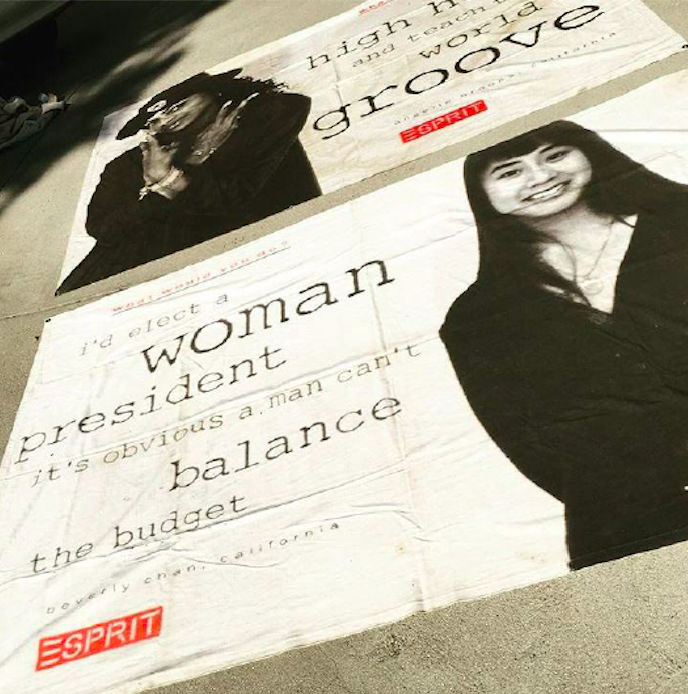
Her advice for aspiring archivists? “Make sure you know the purpose of your archive (hobby or preservation project) because it can be very expensive to maintain. I would recommend creating an ‘intake’ workflow, and be organized! Initially, I wasn’t organized with cataloging my archive, now I have a spreadsheet with thumbnail images, dimensions, year, collection, etc. It is a tedious task but I think in the end it will be worth the effort.”
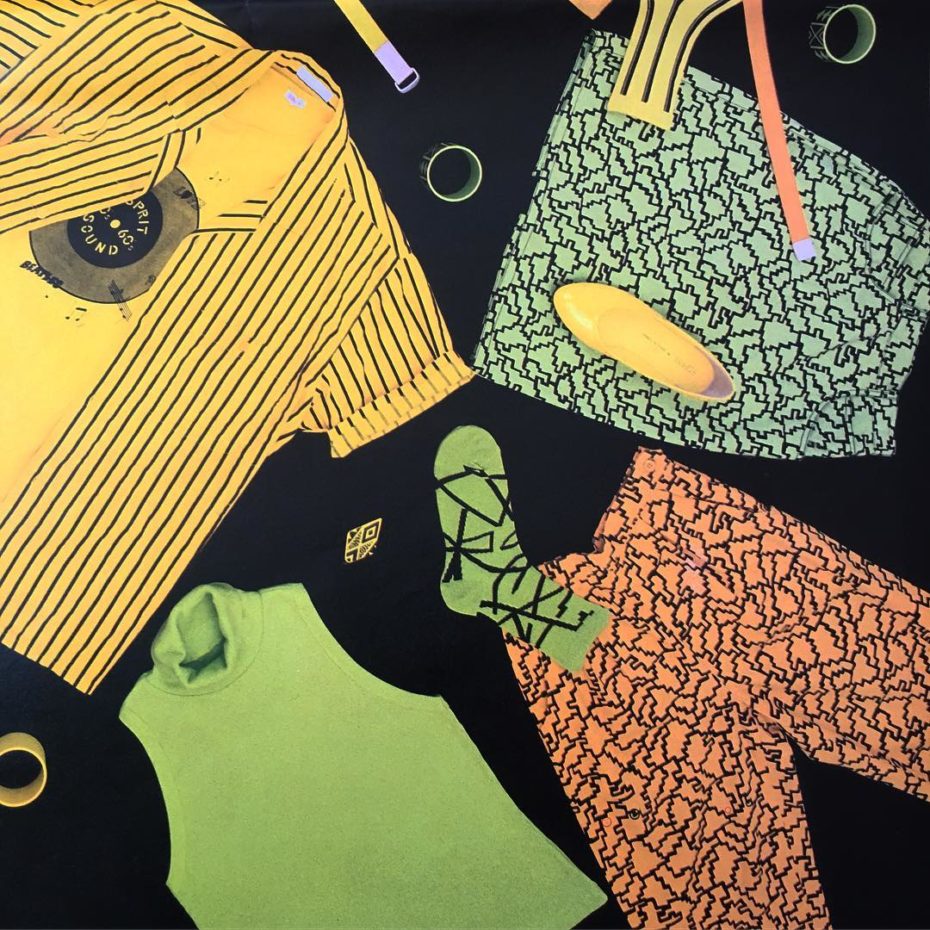
Words to live by for an archivist, as well as anyone looking to organise and amp up their quarantine hobbies. “For the audience who grew up with Esprit, I hope they fall in love with the brand all over again,” Michelle says about her archival end game. For the younger generation, she hopes the archive can offer a blueprint for meaningful fashion industry disruption. To build platforms that go beyond traditional conceptions of retail. To disrupt, rebuild, and speak up for something that matters.

Discover the Esprit Flashback archive on Instagram.








